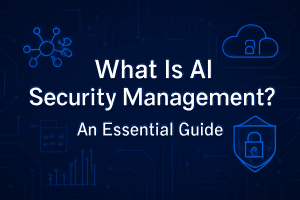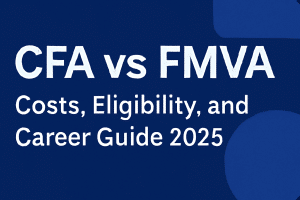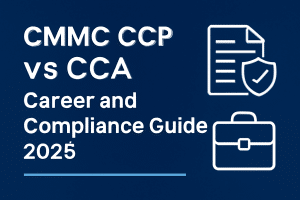The day of the CISSP exam can be a nerve-wracking experience, especially given the exam’s comprehensive nature and its significance in advancing your cybersecurity career. Understanding what to expect on exam day and being fully prepared for the experience can help you feel more confident and in control.
In this blog, we’ll walk you through everything you need to know about the CISSP exam day, from the logistics to question types, and give you tips to ensure you’re fully prepared for success.
TLDR: Too Long; Didn’t Read
The CISSP exam day involves arriving at the test center early, going through biometric checks, and sitting for a Computerized Adaptive Test (CAT). Expect a mix of multiple-choice, drag-and-drop, and hotspot questions. The exam can last up to 3 hours, with 125-175 questions. To prepare, get a good night’s sleep, arrive early, and manage your time wisely during the test.
What to Expect on CISSP Exam Day
Knowing exactly what will happen on the day of your CISSP exam will help reduce stress and ensure you’re mentally and physically prepared. The experience is highly structured, so let’s break it down step by step:
1. Registration and Arrival
Arrive Early:
The first step is making sure you arrive at the test center with plenty of time to spare. ISC2 recommends arriving at least 30 minutes early to give yourself time for registration and any required security checks.
What to Bring:
You’ll need to bring a valid government-issued ID (such as a passport or driver’s license) to verify your identity. Ensure that the name on the ID matches the name you registered with.
Check-in Process:
- Photo and Fingerprint: Expect to have your photo taken and your fingerprints scanned for identity verification.
- Biometric Checks: Depending on the testing center, you may be asked to undergo additional biometric checks, such as a palm scan.
Why This Matters:
Arriving early ensures you’re calm and collected. Having the right ID and being prepared for security checks helps prevent delays and anxiety on exam day.
CISSP Exam Day Timeline
| Timeframe | What to Expect | Key Tips |
| Arrival (30–45 min early) | Check in at the test center; show government-issued ID; biometric check (photo, palm scan). | Bring 2 valid IDs, arrive early to avoid stress. |
| Pre-Exam | Locker assignment, review of candidate agreement, optional tutorial on exam interface. | Store personal items securely; quickly review instructions. |
| Exam (up to 3 hrs) | 125–175 adaptive questions (CAT format) or up to 250 for non-English versions. | Pace yourself, flag tough questions for later. |
| Breaks | Unscheduled; clock keeps running if you leave. | Use bathroom and water breaks strategically. |
| Post-Exam | Receive preliminary pass/fail; official email follows. | Stay calm, results are confirmed within a few days. |
2. Understanding the CISSP Exam Format
The CISSP exam is a Computerized Adaptive Test (CAT), meaning that the difficulty of the questions adjusts based on your responses. This allows the test to accurately measure your proficiency.
Key Details:
- Number of Questions: You’ll face 125-175 questions, depending on your performance.
- Question Types: The CISSP exam includes a variety of question formats:
- Multiple Choice: Standard questions with four answer options.
- Drag-and-Drop: Organize or match items based on their relevance.
- Hotspot: Click on the correct area of a diagram or image.
- Multiple Choice: Standard questions with four answer options.
How the Exam Works:
- Adaptive Testing: The test becomes harder or easier based on how you answer questions. Correct answers will lead to more difficult questions, while incorrect answers will result in easier ones.
- Time Limit: The exam lasts up to 3 hours. You’ll need to manage your time carefully to ensure you complete the exam.
Why This Matters:
Understanding the question types and format helps you mentally prepare for the test. Time management is key to ensuring that you don’t run out of time, especially since the test can adjust based on your responses.
CISSP Question Types and Approach
| Question Type | Description | How to Handle |
| Multiple Choice | Standard one-best-answer format. | Read carefully; eliminate obvious wrong answers. |
| Drag-and-Drop | Arrange or match items in correct order. | Understand processes like incident response flow. |
| Hotspot | Click the correct area in a diagram. | Focus on network architecture and data flow. |
| Scenario-Based | Multi-part problems simulating real incidents. | Apply real-world logic, not just memorized facts. |
3. Managing Exam Stress
The CISSP exam is long and challenging, and it’s common to feel a bit of stress or anxiety. However, managing stress is key to performing your best.
Tips for Managing Stress:
- Stay Calm: Take deep breaths and maintain a calm, focused mindset.
- Pace Yourself: Don’t rush. If you’re unsure about an answer, skip it and come back later.
- Stay Positive: Remind yourself that you’ve prepared well, and trust your knowledge.
Why This Matters:
Stress can cloud your judgment and negatively impact your performance. Remaining calm and focused will help you tackle each question with a clear mind.
4. Time Management During the Exam
Effective time management during the CISSP exam is crucial to completing all the questions within the allocated time. Here’s how to stay on track:
Time Breakdown:
- You have 3 hours for 125-175 questions, which means you have about 1 to 1.5 minutes per question on average.
- If you’re unsure of a question, don’t linger too long. Mark it for review and move on to the next one. You can always come back to it.
Why This Matters:
Managing your time well ensures that you don’t rush through questions and makes sure you have enough time to review marked questions.
5. What Happens After You Finish the Exam?
Once you’ve completed the exam, you’ll receive a preliminary pass/fail result right away. ISC2 will email your official result within a few days.
What to Expect:
- Preliminary Result: You’ll immediately see whether you’ve passed or failed, but this is just a preliminary score.
- Official Results: Your official results will be sent via email after ISC2 verifies the answers and scoring.
Why This Matters:
Knowing that you will receive instant feedback can alleviate some anxiety and give you an early indication of your performance.
6. Tips for Success on Exam Day
A few additional tips can make your CISSP exam day experience smoother and more successful:
Tips:
- Get a Good Night’s Sleep: Don’t stay up late cramming. A rested mind will perform better.
- Eat a Healthy Meal: A light, nutritious meal before the exam will help keep your energy levels steady.
- Stay Hydrated: Bring water, but avoid caffeine or sugar that could make you jittery.
Why This Matters:
The exam is mentally demanding, so you need to be physically and mentally prepared to perform at your best.
Quick Summary
On CISSP exam day, arrive early, bring a valid ID, and be ready for biometric checks. Expect to face 125-175 questions, including multiple choice, drag-and-drop, and hotspot questions. The exam lasts up to 3 hours. Focus on time management and remain calm to handle the stress. After completing the exam, you’ll receive a preliminary result, with official results emailed later.
Final Thoughts
The CISSP exam is a major milestone in your cybersecurity career, and being prepared for exam day can help reduce anxiety and set you up for success. By understanding the logistics of the exam, managing your time wisely, and staying calm, you’ll be able to focus on what matters most: applying your knowledge. Good luck, and remember that the effort you’ve put into your preparation will pay off.
More Resources
For a deeper dive into the CISSP exam and detailed insights into the exam domains, learn more about CISSP exam.
To further support your preparation, check out these related blogs:



























